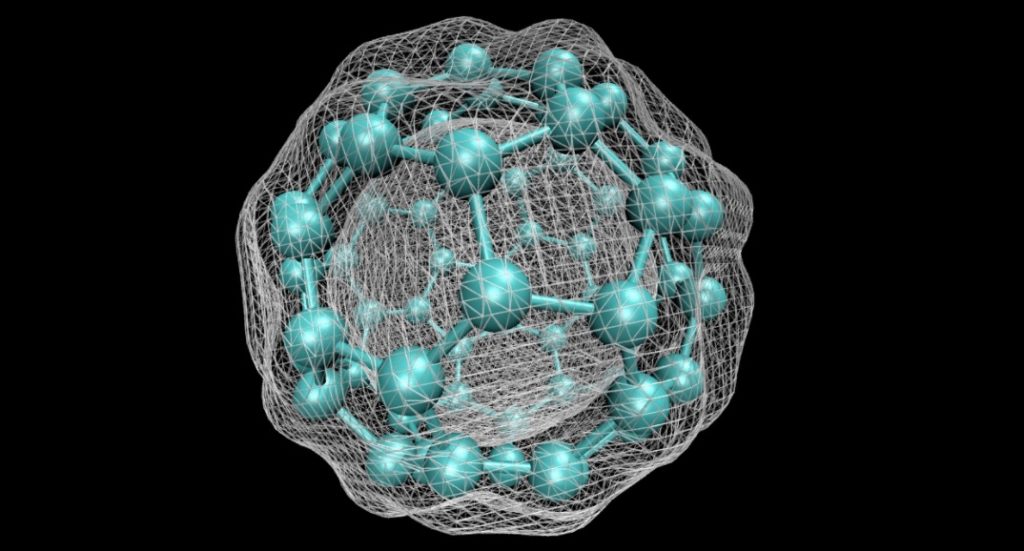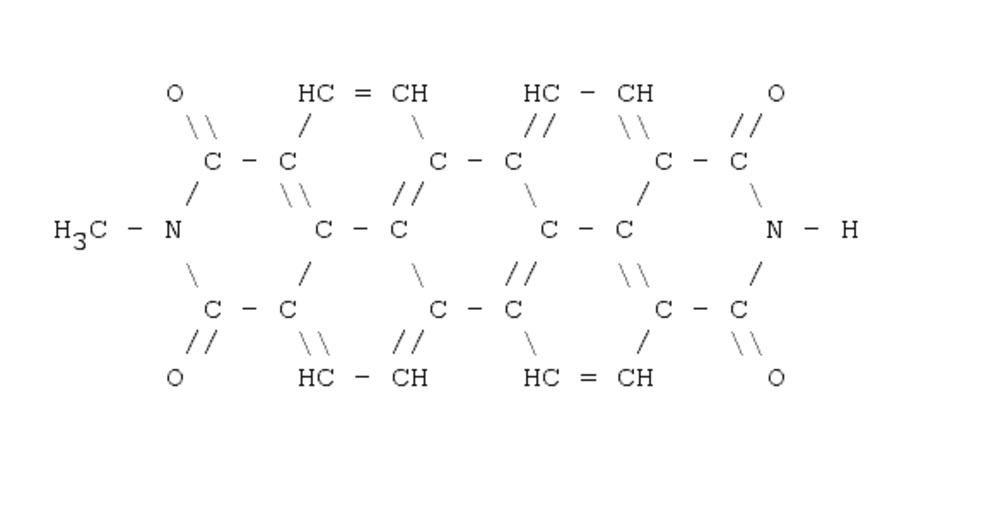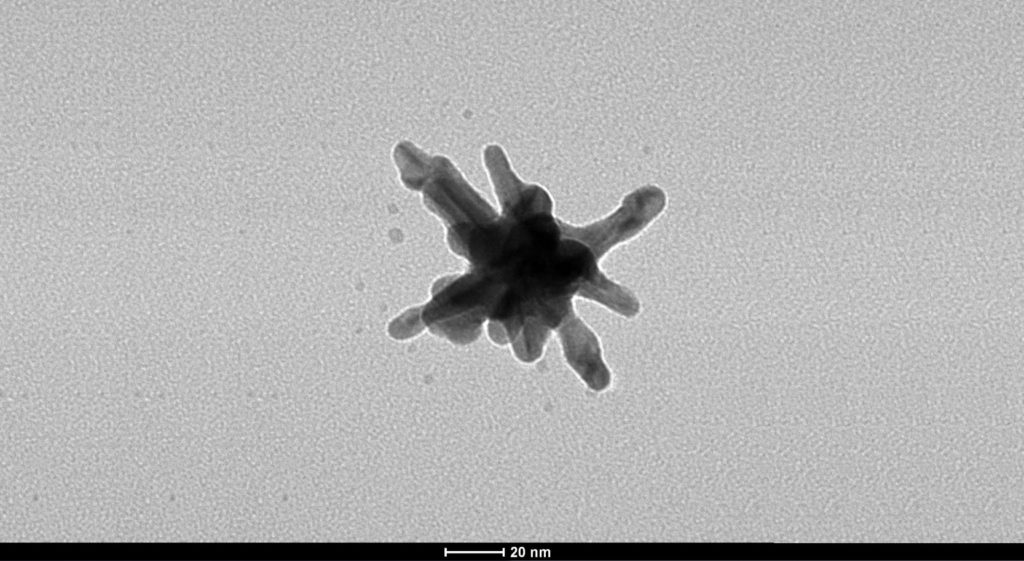We hear a lot about Nanotechnology with most of it being futuristic science stories. But you might not know that we’re currently fighting cancer with it today. Read on as I lead you through some of the more cutting edge examples. They’re still mostly early stage trials, but some of the results are amazing. As they progress into the real world we should start to see them more and more often.

A Spherical fullerene, also referred to as buckyballs
Table of Contents
What Is Nanotechnology?
The word gets thrown about a lot but what is the proper meaning of it? Most just throw it in there as some kind of buzz word or something in Star Trek, but after years of research and development things are picking up. Countries are now spending billions on nanotechnology. The research is now accelerating much faster and real world products are already out there.
Generally nanotechnology refers to anything that works on the scale of nanometers (nm) . That is, one billionth, or 10−9, of a meter. To get a sense of how small this is 1 Carbon Atom is around 0.14 nm wide. A molecule of TNT is around 1.6 nm

It’s Dynamite!
So when someone says something is “10 nm wide” we are very clearly talking in the order of atomic scale here. You can have molecules that are bigger than some of the nanotechnology devices that have been created. But how do any of these devices help fight cancer?
Nanostars!

Gold Nanostar. Source: phys.org
Our first example uses immunotherapy and nanotechnology together. At Duke University they used “nanostars” to heat and kill tumor cells. The nano sized gold particles were shaped with pointy ends like stars to better absorb laser pulses. The laser pulses are absorbed more at the tips meaning they can reach deeper into body at lower power levels. The process is quite straightforward:
- Inject the nanostars into cancerous areas
- Nanostars flow to the cancer cells specifically due to their “leaky vasculature”
- Once there doctors direct lasers at the clumped nanostar regions
- The laser beams heat up the nanostars, burning the cancer cells and only those cells
In this way the cancer treatment is non-invasive and doesn’t involve any potent drugs. This method has been known for a while so they decided to use immunotherapy as well. This is because many tumors produce a lot of molecules called PD-L1. This disables T cells which are a key fighter in the immune system. The immunotherapy part of this trial was used to counter and block this PD-L1 molecule. Leaving the immune system free to destroy the cancerous cells.
The reason these two separate methods work so well together is explained by Vo-Dinh:
When a tumor dies, it releases particles that trigger the immune system to attack the remaining parts. By destroying the primary tumor, we activated the immune system against the remaining cancerous cells, and the immunotherapy prevented them from hiding. – Vo-Dinh
The results were fantastic with two of the five test mice lasting much longer than the other control mice. One of them was still alive a year later even after they injected more cancerous cells into it!
The mouse’s immune system attacked and destroyed them without a problem indicating a vaccine effect
Fighting Cancer With Drug Delivery
Nanotechnology has also provided the possibility of delivering drugs to specific cells using nanoparticles. This greatly reduces side effects in cancer drug delivery as only the cancer cell is hit with the drugs. It also cuts down on the amount of drug that’s needed per treatment saving costs.

First a nano sized device is built. It’s designed to target only the cancer cells. Then the anti-cancer drug is put inside the nanoparticle and released into the blood. It targets the cancer cells because it’s keyed to them with special molecules on the outside. Once it has attached itself to the cancer cell, it can either release its drug cargo or go inside the cell and then release the drug cargo.
The result is a cancer drug treatment that can use higher doses of anti cancer drugs. These higher doses end up causing fewer side effects due to only being released on cancer cells. This technique has been in development for over 5 years now with a trial already done in 2012.
A clinical trial using the platform of ‘Mini cell’ nanoparticle for drug delivery was tested on patients with advanced and untreatable cancer.
This Phase 1 trial was well tolerated, and of the 28 people treated, 10 had stable disease at 6 weeks, and one patient safely received 45 doses over 15 months.
Nanotechnology And Detection
Finally we look at how nanotechnology is helping to detect cancer earlier. This will allow us to prevent it from getting out of control in the first place.
A recent test successfully implanted carbon nanotubes into mice to detect cancer markers. This sensor detected variations in the blood and communicated it to the researchers. Eventually it could either be implanted (non-invasively) as done in the test or used as a wearable device.
You can imagine one day having your Fitbit or even smartwatch monitor these tiny devices. They would let you know as soon as any sign of cancer was detected so you could act straight away. One of the biggest factors in fighting cancer and winning is getting to it early. As such this could prevent a huge number of lives being destroyed.
The Future
These are just some of the hundreds of advanced experiments that are going on in the world. Each day existing trials are progressing further and we’re getting more control over them. While cancer is a huge problem with many different types, many of these ideas are very flexible.
Hopefully quite soon we’ll not only be able to cheaply and easily monitor our bodies for cancer. But also have far more powerful and less destructive methods to fight it off. Combined these should not only extend lives, but give everyone better quality of life too.
Have you had any experience with cancer? What about new cancer trials? Do you think they are making good progress? Let us know in the comments below!
The benefits include: 1) How to get those silky smooth videos that everyone loves to watch, even if you're new 2) How to fly your drone, from taking off to the most advanced flight modes 3) Clear outlines of how to fly with step-by-step instructional demonstrations and more 4) Why flying indoors often results in new pilots crashing their drone 5) What other great 3rd party apps are out there to get the most out of your drone 6) A huge mistake many pilots make when storing their drone in the car and how to avoid it 7) How to do all of these things whilst flying safely and within your countries laws.




